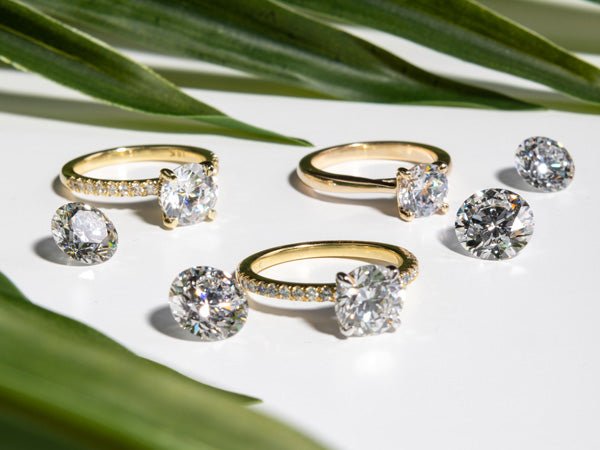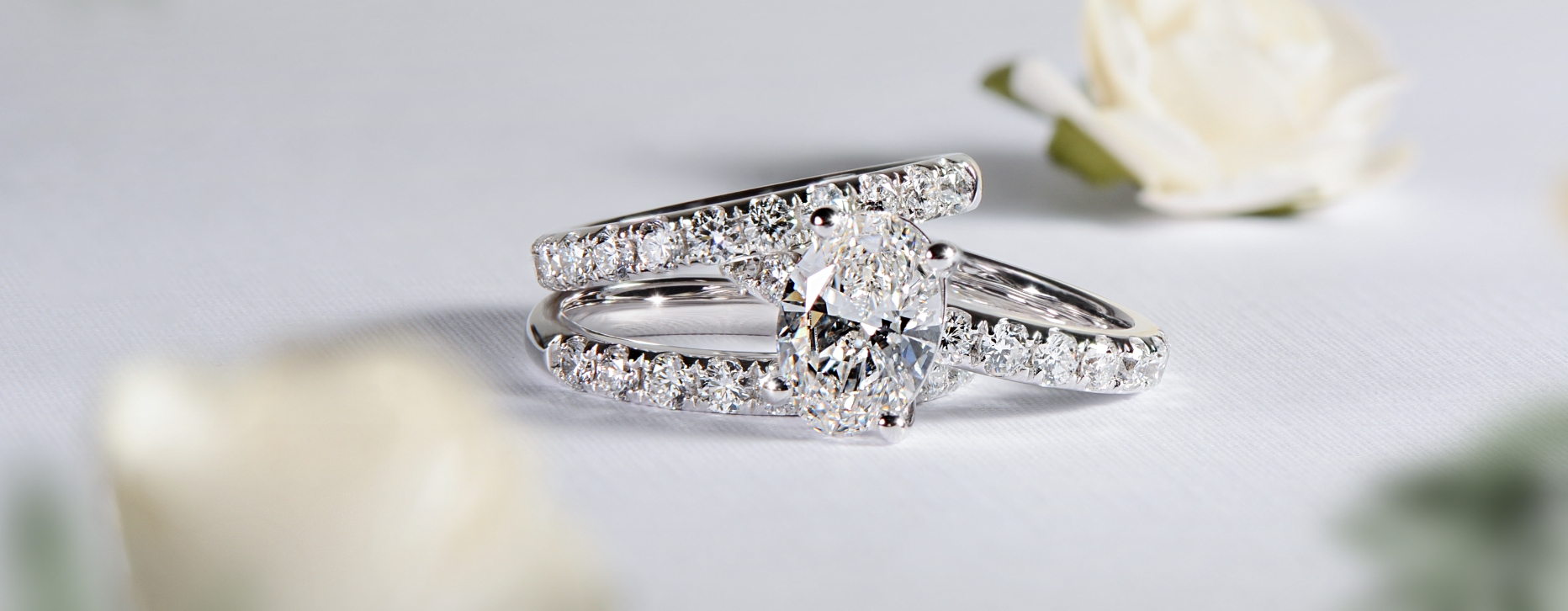The jewelry industry has been experiencing a shift in recent years as consumers grow increasingly conscious of the environmental impact of their purchases. One of the most significant movements in this field is the rise of eco-friendly diamonds. These diamonds provide an ethical alternative to traditional mining practices, which have often come under scrutiny for their environmental degradation and ethical concerns. 친환경 다이아몬드 promise beauty without the guilt, aligning with values that prioritize sustainability, fairness, and environmental preservation.
Table of Contents
What Are Eco-Friendly Diamonds?
Eco-friendly diamonds refer to diamonds that are produced with minimal environmental impact. Unlike traditionally mined diamonds, eco-friendly diamonds are typically created in laboratories, using advanced technology to replicate the natural conditions that form diamonds. These lab-grown diamonds are chemically identical to mined diamonds but require significantly fewer resources and less energy, which makes them an environmentally conscious choice. choosing eco-friendly diamonds, consumers can enjoy the elegance of a diamond without contributing to the destruction often associated with diamond mining.
How Eco-Friendly Diamonds Are Made
The process of creating eco-friendly diamonds relies on two primary methods: Chemical Vapor Deposition (CVD) and High-Pressure High-Temperature (HPHT) synthesis. Both methods aim to mimic the natural diamond-forming processes found deep within the Earth. In CVD, a diamond seed crystal is placed in a chamber filled with carbon-rich gases, which, under the right conditions, form layers of carbon around the seed, eventually creating a diamond. HPHT, on the other hand, uses high pressure and temperature to form lab created diamonds from carbon materials.
These processes for producing eco-friendly diamonds consume far fewer resources than traditional mining. There is no need to disrupt ecosystems, use heavy machinery, or damage natural landscapes. With lab-grown diamonds, there is a considerable reduction in the carbon footprint, which is why eco-friendly diamonds are becoming increasingly popular among environmentally aware consumers.
Benefits of Choosing Eco-Friendly Diamonds
Eco-friendly diamonds offer several advantages that make them appealing for anyone looking to make a sustainable choice. Firstly, lab-grown diamonds have a much lower environmental impact compared to mined diamonds. Mining for diamonds can lead to deforestation, soil erosion, and water pollution, all of which have long-term effects on the environment. opting for eco-friendly diamonds, consumers reduce their contribution to these harmful practices.
Another benefit is that eco-friendly diamonds are often more affordable than mined diamonds. Since the production of lab-grown diamonds does not involve the extensive labor and resource costs of mining, these diamonds come at a lower price without compromising on quality or appearance. For consumers, this means they can invest in high-quality, beautiful diamonds without overspending or harming the environment.
Eco-Friendly Diamonds and Ethical Sourcing
One of the major concerns in the traditional diamond industry is the issue of conflict diamonds, also known as blood diamonds. These are diamonds mined in war zones, with the proceeds often used to fund armed conflicts. This unethical practice has led many consumers to seek alternatives that guarantee fair and humane treatment of workers. Eco-friendly diamonds eliminate this problem entirely, as they are produced in controlled laboratory environments, ensuring that no human rights abuses are associated with their creation.
Moreover, eco-friendly diamonds provide full transparency about their origins. Consumers can trust that these diamonds are sourced responsibly, without exploitation or unethical practices. choosing eco-friendly diamonds, buyers support an industry that prioritizes ethical standards and promotes fair treatment across the supply chain.
Environmental Impact of Eco-Friendly Diamonds
The production of eco-friendly diamonds significantly reduces the environmental toll typically associated with diamond mining. Traditional diamond mining involves the use of heavy machinery, which emits large quantities of greenhouse gases. In contrast, lab-grown diamonds require a fraction of the energy used in mining, resulting in a lower carbon footprint. Since eco-friendly diamonds are produced in a lab, they do not require the extensive land excavation or water usage typical of diamond mining operations.
Additionally, eco-friendly diamonds help to conserve natural resources. Mining operations often lead to the destruction of ecosystems and habitats, displacing wildlife and polluting water sources. Choosing eco-friendly diamonds helps to reduce these environmental risks, making them a sustainable choice that supports ecological balance.
Are Eco-Friendly Diamonds the Same as Natural Diamonds?
One of the most common questions about eco-friendly diamonds is whether they are as authentic and valuable as natural diamonds. The answer is yes. Eco-friendly diamonds are chemically, physically, and optically identical to mined diamonds, as they are created using the same elements and under similar conditions. Both types of diamonds possess the same sparkle, clarity, and durability that people expect from high-quality diamonds. In fact, only a trained gemologist with specialized equipment can distinguish between a lab-grown diamond and a mined diamond.
This similarity in quality has contributed to the popularity of eco-friendly diamonds, as consumers can enjoy the beauty and prestige of a diamond without the negative environmental impact. Eco-friendly diamonds offer an appealing option for those who want to combine luxury with sustainability.
The Growing Popularity of Eco-Friendly Diamonds
As awareness of environmental issues grows, so does the popularity of eco-friendly diamonds. Many jewelers now offer a range of lab-grown diamonds, providing consumers with more choices for sustainable luxury. With advancements in technology, eco-friendly diamonds have become more widely available, and their prices continue to decrease, making them accessible to a broader audience. This shift in consumer demand reflects a desire for products that align with sustainable and ethical values.
Social media and environmental advocacy have also played a significant role in promoting eco-friendly diamonds. Influencers, celebrities, and environmental organizations are increasingly endorsing eco-friendly diamonds as a responsible choice for anyone looking to make a positive impact through their purchases.
The Future of Eco-Friendly Diamonds
The future of eco-friendly diamonds looks promising as more consumers and companies embrace sustainable alternatives. Technological advancements continue to improve the quality and affordability of lab-grown diamonds, making them a viable replacement for traditionally mined diamonds. As the demand for sustainable options grows, eco-friendly diamonds will likely become the standard in the jewelry industry.
Additionally, as the global community works toward reducing its carbon footprint and conserving resources, eco-friendly diamonds stand out as a powerful symbol of sustainability. They represent a commitment to protecting the planet and making ethical, responsible choices. The industry’s shift toward eco-friendly diamonds signals a move toward a greener, more conscious approach to luxury.
Conclusion
Eco-friendly diamonds offer a sustainable, ethical alternative to traditional diamonds, allowing consumers to enjoy beautiful jewelry without harming the environment. With their lower environmental impact, ethical sourcing, and affordability, eco-friendly diamonds are an ideal choice for those who value both luxury and sustainability. As more people embrace the benefits of eco-friendly diamonds, they are helping to shape a future where luxury and responsibility go hand in hand. choosing eco-friendly diamonds, consumers can make a statement that reflects their commitment to a more sustainable world.




